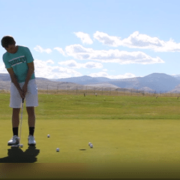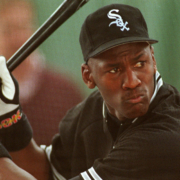Struggling To Hit In Games But Not In Cage Or Batting Practice? Discover Game-Like Baseball Softball Hitting Stations
Is your son or daughter struggling to hit in games but not in the cage or batting practice? Discover how to put together game-like baseball or softball small group hitting stations.
Cage Bombs: How-To Identify & Fix A “5 O’clock” Hitter
Okay, in all seriousness…I received an email from a reader named Garrett, and in response to a post I did, titled:
“What Every Coach MUST Know About Giving Feedback To Hitters”. This post will identify and fix a “5 O’clock” hitter…
Identifying a “5 O’clock” Hitter
“Hey Joey,Does this sound like the recipe for a five o’ clock/inconsistent hitter to you?
- takes one swing then goes and analyze the video…repeats the process 30 times
- relies on someone else to tell the what they are doing wrong
- uses BP to try and hit bombs…how do your hitters use bp on the field for work?
- uses the tee to practice the perfect swing for the perfect pitch
Thanks.”
SCIENCE-BASED TRAINING:
Improve your hitting strategy dramatically by applying human movement principles.
Learn not only how and what to train but also the science behind the methods.
How-To Fix a “5 O’clock” Hitter
My responses below addresses the numbered questions above (slightly edited)…
“Garrett,
- That sounds like a similar approach to Jaime Cevallos’s Positional Hitting
! Video analysis is a great source of external feedback, but like everything else, can be relied upon too much, or obsessively at times. I’d prefer the hitter work out the kinks for at least 5-8 swings before filming again. This can be supported in Peter C. Brown’s book Make It Stick
.
- Hitters are their best own evaluators. Nobody else can tell them how or what they felt on a particular swing. I’ve had hitters like this, and typically it stems from mom or dad (or somebody) giving them the answers all the time growing up. Not letting them make their own mistakes, and learning from them. Young hitters have to fail on their own, then struggle for the adjustment…and if they need help after that, then coach can pick them up. This has Daniel Coyle’s book The Talent Code
written all over it.
- “Practice like you play, so you play like you practice”. If you have to compete in a 100-meter sprint, you can’t train like you would for a marathon. Marathon batting practice sessions (taking 8+ swings per round) are useless to a game swing. My hitters take 3-5 swing rounds, and then get a brief break. They’re also required to swing as hard as they can – under complete control – for each swing. CLICK HERE for a great testimonial case study post from one of my San Diego dads, on the turnaround his two High School boys experienced making this switch.
- Mass practice off the tee is no good. The tee position must be varied after each swing. This is talked about extensively in Peter C. Brown’s book above as the Art of Variance. Also, please refer to preceding point #3.
Hitting cage bombs gives a short-term boost to self-confidence. And hitters who don’t do train for the “100-meter sprint” will break during competition.Self-confidence is gained through working the process, staying the course, and not obsessively focusing on outcomes or their competition. Gio Valiante’s book Golf Flowis a great resource for this type of thinking.”
BOMB!! 😀 lol
My question to you is…What are the one or two biggest mistakes you see coaches or players make in practicing like they’re going to play?
Please REPLY in the comments section below…
- Master Your Swing: How to Choose the Best Baseball Hitting Training Videos for Immediate Skill Boost - February 28, 2024
- Mastering Advanced Baseball Techniques: Personalized Online Coaching Elevates Youth & High School Hitting Skills - January 17, 2024
- Master the Art of Batting by Doing the Opposite of What You Think - January 16, 2024













Hey Joey,
Great comments, very informative.
The biggest mistakes I observe coaches making is that they do not correlate their practice sessions as close as possible to game type situations they still just put their players through the same old conventional, non-learning, boring, waste of time consuming sessions.
All of the informative info in the books will never get to the players until coaches at all levels of our game who think they know it all get their heads out of their butts and learn to become keen students of team and individual player skills which would in turn enable them to “TEACH” which is a forgotten phase of the game, their players/athletes their team fundamentals and individual player skills, nowadays players are just put through the motions whether it be prior to games or during practice sessions, I realize that prior to and during game times teaching is not a priority but there are prior to and game situations to be adjusted to such as catchers properly approaching and fielding balls out in front of them, working out fielders on proper drop back foot work during slack time etc, there is no sense in just going through the motions while working on these types of highly important player skill fundamentals but this is what I observe while watching local youth, high school and college teams during practice sessions and prior to game preparations, actually here in my area our players receive very little teaching if any at all.
I might add, to the players, parents and all others involved in a players development that being a major league player, a former major league player or a former player of any level does not necessarily make one a competent teacher/instructor due to the fact that while playing one concentrates on their own individual play which has no connection to the teaching/instruction of others.
To me learning from the best of the best and becoming a keen student of team and individual player skills is of the utmost importance to the development of each player/athlete a coach comes in contact with.
Great Base Ball-N
Don Ervin
I couldn’t agree more Don. My college baseball Coach Bob Bennett was elected into the NCAA Baseball Coaches Hall Of Fame a few years ago. He told me a story of when he was head coaching the USA Olympic baseball team in the late 80’s. He saw how the Japanese made efficient work of batting practice. Two infield coaches – one in the middle of the first base line and another in the middle of the third base line hitting fungoes to the opposite side infielders, in-between the hitter taking swings in the cage. The outfielders were lined up single file at their positions, and one player in the line was “hot”. They all took turns getting jumps and fielding the ball as the hitter hit it to them. And the hitter in the cage was working on bat control and situational hitting. Coach Bennett brought this program to us at Fresno State, and we had been doing it ever since.
You’re absolutely correct about Major League experience playing. Playing and teaching are two different muscles of the mind. Just because you are or were a high level player doesn’t mean you’ll be a high level coach. Just read any book John Wooden authored. Thanks for sharing Mr. Don!
LMAO! What, no bat flips?!? That gave me a good laugh…Joey, was that you playing Domingo Ayala??
lol, BOMB!! Dude, Ryan, you unveiled my true identity 😀 I love Domingo’s stuff, and of course it’s a parody…BUT, this mentality does go on, and as serious as a heart-attack. I just thought Garrett’s email to me was timely.